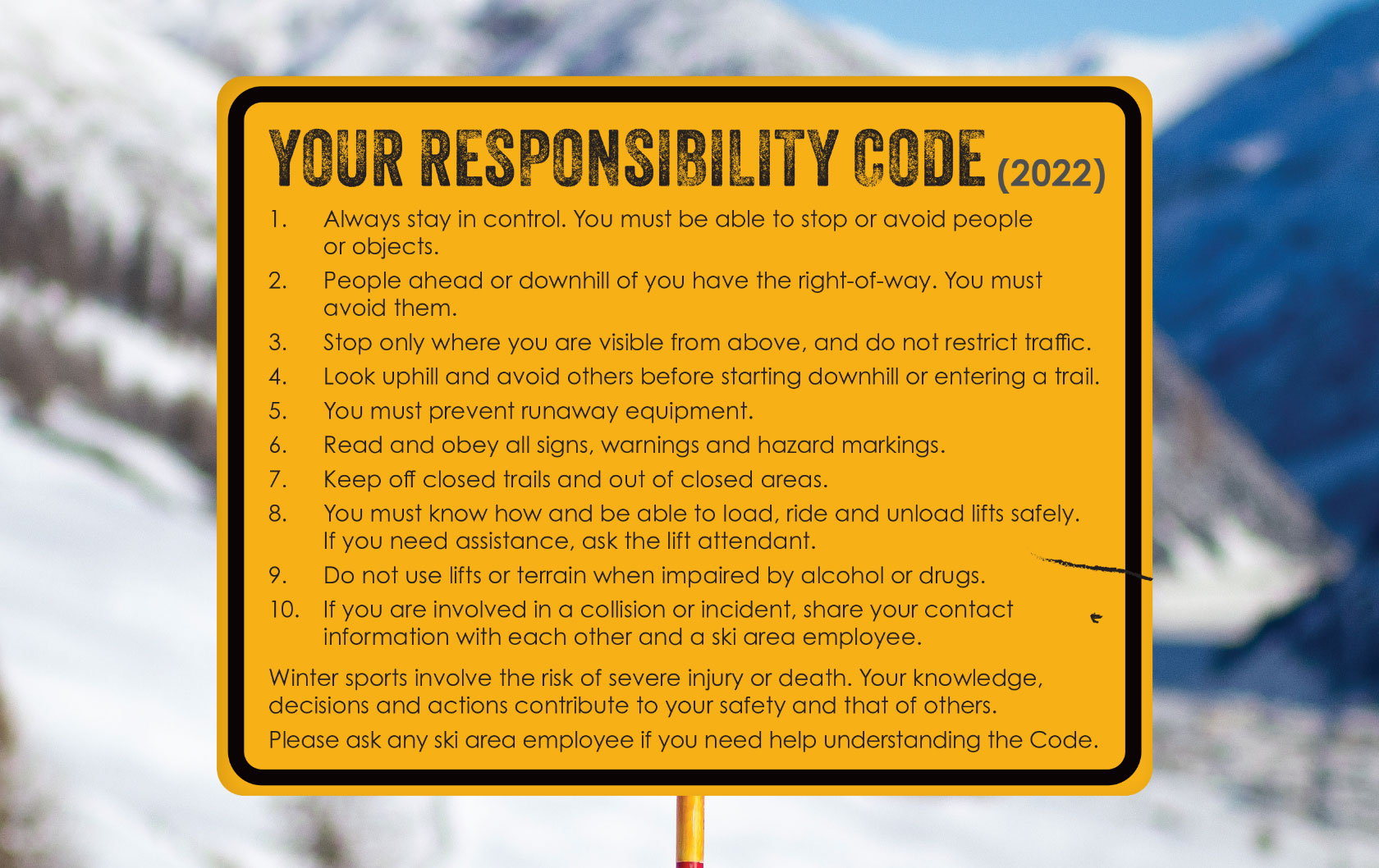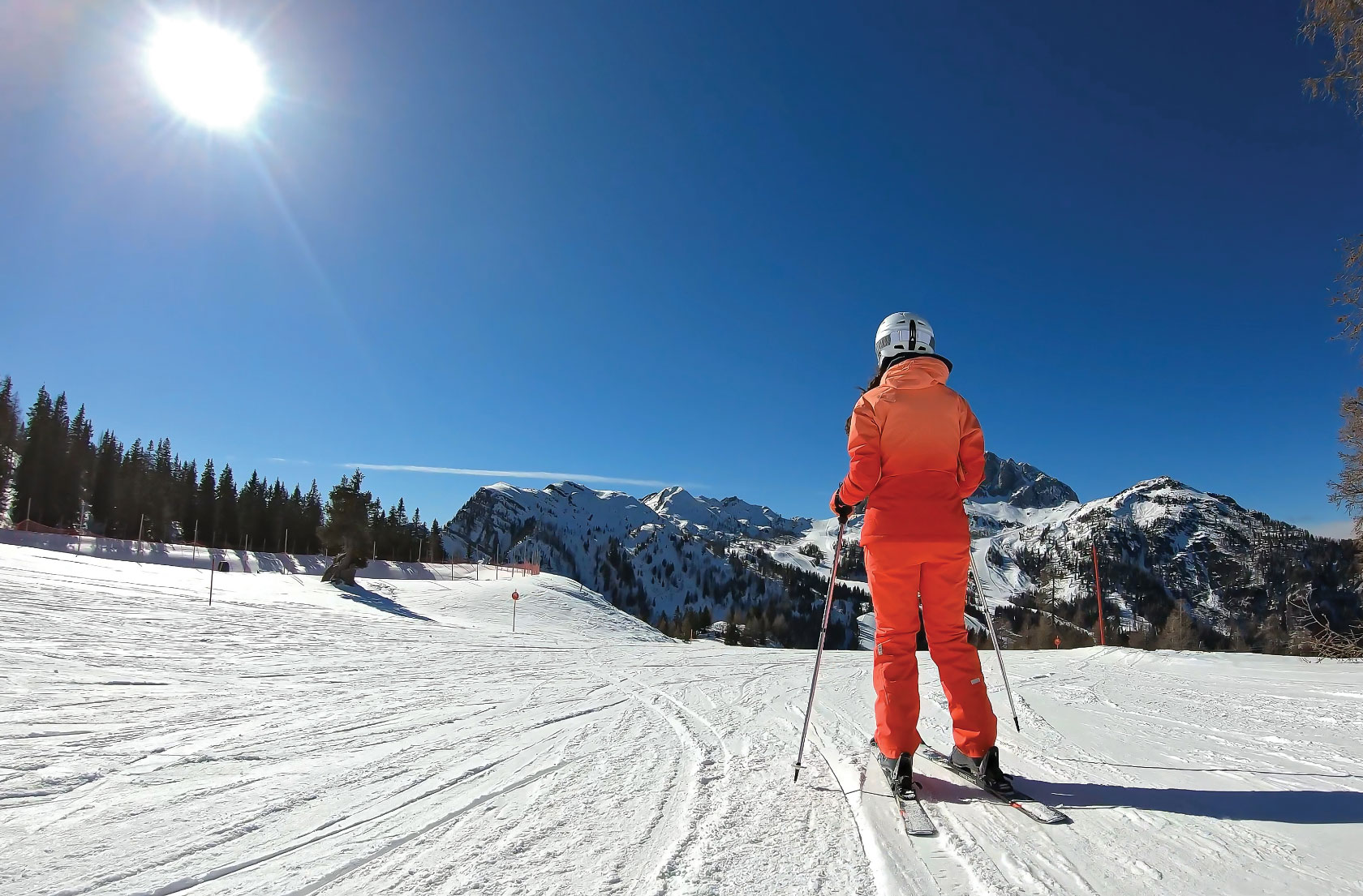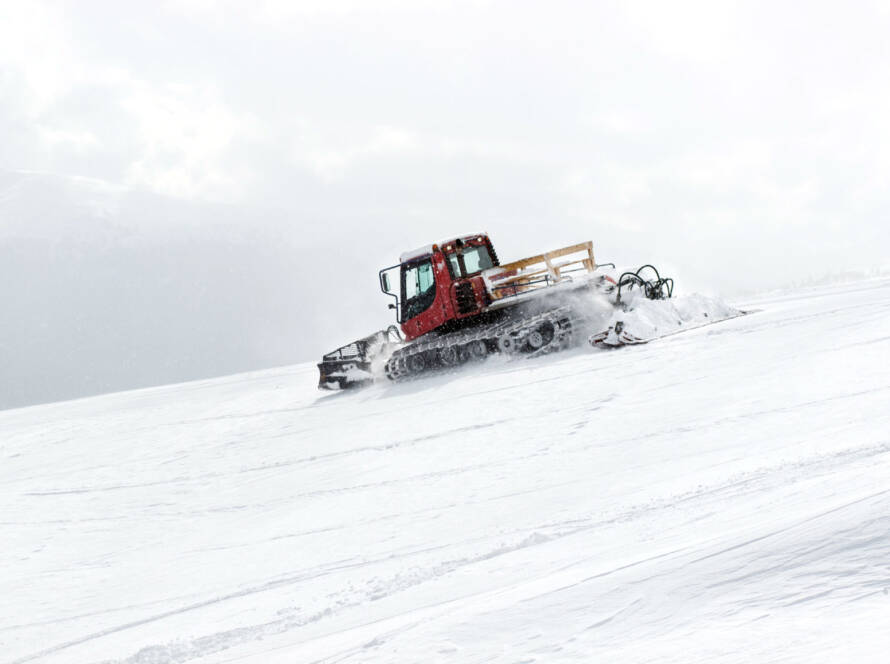If you buy a new computer, you look at the manual. If you’re building a shelf, you look at the instructions. However, do you know where to look if you’re hitting the slopes for a fun weekend of skiing or snowboarding?
Treated as the “rules of the road,” but for the slopes, the National Ski Areas Association (NSAA) “Skier Responsibility Code” was first launched in 1962. The Code was, and remains, a code of ethics for skiers and snowboarders that informs them of the etiquette expected on the hill, ensuring that they can have a safe experience and a day they can remember for all the right reasons.
“The Code is your social contract as a skier or snowboarder, and lists the things you should do out of just basic respect for your own body and safety, as well as for the people around you,” said Adrienne Saia Isaac, director of marketing and communications at NSAA. “It’s not trying to keep you from having a good day. It is just trying to keep everyone safe, and you, as an individual, are a huge part of that.”
Over the last 60-plus years, the Code has seen numerous revisions to make it more relatable for a broader group of snowsport enthusiasts and address common risk management trends that reflect the evolving nature of snowsports. In 2022, NSAA once again changed the “Skier Responsibility Code,” growing it from seven points to 10 and renaming it the “Your Responsibility Code” to encompass the many ways people now slide on snow down the hill.
What has changed?
The most recent version of the Code revised the pre-existing seven points and modernized the language used. In addition, two new points were added, emphasizing the importance of not skiing or riding while impaired with alcohol or drugs, and letting skiers and riders know what to do if they get into a collision or other on-mountain incidents.
“We updated the Code to make sure everyone can know the rules of the game before they get to the mountain,” said Isaac. “But really, these are pretty common-sense rules to having a safer day on the slopes. It’s about giving people more information, so they know what to do and what’s expected of them.”

Another change to the Code saw a previous point (Observe signs and warnings and keep off closed trails) split into two new separate points (6. Read and obey all signs, warnings and hazard markings, and 7. Keep off closed trails and out of closed areas) as a way to stress further the importance of not going into closed-off areas.
“Ski areas close parts of their mountains and trails for a reason, yet many skiers and snowboarders fall to ‘powder fever’ and disregard the warnings [and] decide to go where they aren’t supposed to,” said Isaac. “So, we wanted to make the Code clear that everyone not only reads the hazard signage, but also knows they are expected to obey it. Being aware of the signs and warnings around you and then heeding them will just prepare you to have a better day.”
A collaborative effort
Development of the new Code has been a two-year process. The updates were made purposefully with input from snow sport industry professionals, risk managers and human factors experts and those outside the industry. The newest iteration of the Code not only addresses most of the common risk management and best practices for skiers and riders, but it also very closely aligns with many of the state statutes across the United States and is in line with the Canadian West Ski Areas Association’s Alpine Responsibility Code.
The NSAA is routinely in contact with its ski area members and keeps them informed of any changes to the Code as they are made. Therefore, when the “Your Responsibility Code” officially launched in the summer of 2022 after months of review and discussion, it did not surprise most of those engaged with the process, and many ski areas have already adopted the new language.
However, it takes some time to make the new signage available and get everyone on the same page. Ski areas and snow enthusiasts can expect to see the 2022 Code used more widely over the next two seasons.
“As I’ve traveled around over the last year and gone skiing at ski areas of all sizes across the United States, I’ve been impressed to see how our members have embraced these changes,” said Isaac. “They are using the digital space to get the message out there and are posting the points on their websites and social media during National Safety Month. It has been very cool to see the high level of buy-in that our ski area members have, and that they understand the importance of getting the message out there.”
The previous iteration of the Code was released 20 years ago, and it is important to remember that releasing the new “Your Responsibility Code” is ongoing. The NSAA will continue to examine emerging trends and monitor traffic flow on the slopes to come up with new data that will help inform any further changes needed to the Code.
“Safety never takes a day off, and we’re always reviewing our safety best practices,” said Isaac. “It’s always good to be looking through your procedures to find improvements and, as an association, we just want to ensure that we’re providing the most relevant and up-to-date information available, something that will continue into the future.”



![[image placeholder]](https://www.snowopsmag.com/wp-content/uploads/2023/09/placeholder@2x-890x664.png)
